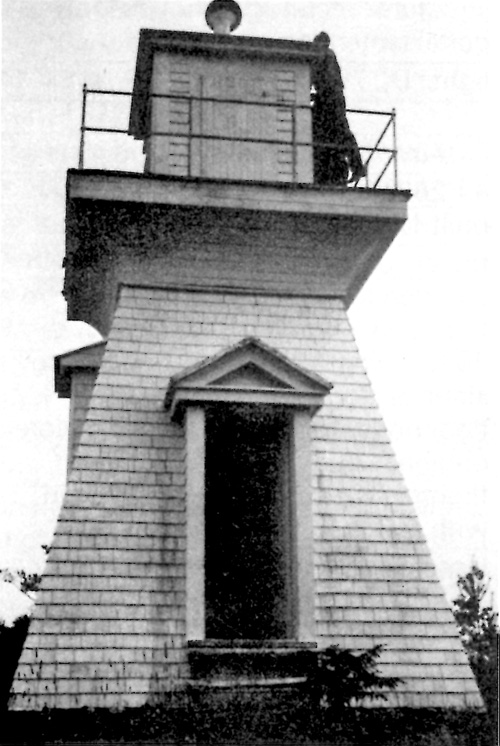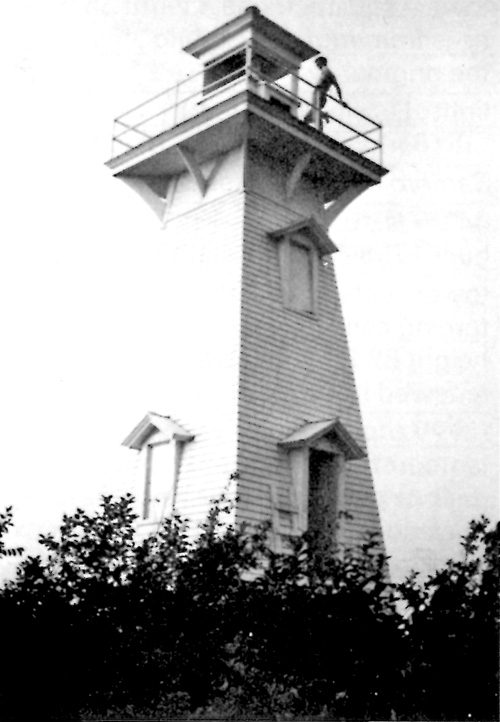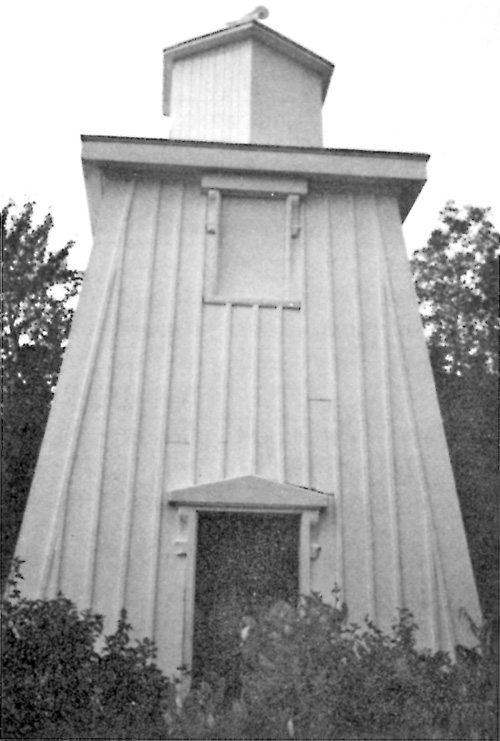|
|
 |
Canadian Historic Sites: Occasional Papers in Archaeology and History No. 9
The Canadian Lighthouse
by Edward F. Bush
Selected Inland Waterways
Lighthouses per se, other then on the Great Lakes and the upper St.
Lawrence and Ottawa rivers, are rarely encountered on Canada's inland
waterways. Mast and pole lights serve this function. Of the few bona
fide lighthouses in this vast inland region of innumerable freshwater
lakes and their connecting river systems, few are old enough or
distinctive enough to be of historical interest; Black Bear Island
lighthouse on Lake Winnipeg and several frame structures on the Ottawa
River are possible exceptions.
Ottawa River
The first lighthouses to be built on the Ottawa were at Green Shoal
opposite Templeton, lit for the first time on 27 October 1860, and at
Point Valois, which went into service on the sixth of the same month.
The latter was a floating light mounted on an iron barge which was
discontinued a number of years ago. The reflector apparatus used
employed flat-wick coal oil lamps.1 The Green Shoal
structure, now over a century old, consists of a square tower 21 feet in
height from base to vane, its timbers and lumber of oak and pine. The
total estimate for the project came to $3,985.2
On the upper Ottawa, three surviving structures claim our attention,
one of which is of rather unusual height. Both follow the familiar
configuration of square towers, with sloping sides (pepper-pot style)
and square wooden lanterns, and both first saw service in 1873. One was
built on Morris Island at the lower end of broad and placid Lake Chats,
and the other at Deep River Islet (Fig. 83), a 24-foot square frame
tower with a pronounced slope to its shingled sides, located above
Allumette Island on the upper Ottawa.3

83 Deep River Islet Lighthouse, Ottawa River.
(Canada. Department of Transport.)
|
The 26-foot Arnprior Island lighthouse, built in 1885 a half-mile
off-shore from the thriving lumber town of the same name, is an
unusually tall structure for a river lighthouse. Built on a small rocky
islet in Lake Chats, this graceful structure is set on a square stone
foundation. Two straight flights of stairs of almost ladder-like pitch
lead to the square lantern platform, which has a pronounced overhang and
is supported by eight brackets. The lantern, as may be seen in Figure
84, is square and set upon a pedestal of similar shape.

84 Arnprior Island lighthouse.
(Photo by author's son.)
|

85 Morris Island lighthouse.
(Photo by author's son.)
|

86 Killarney East Range light.
(Photo by author's son.)
|
Lake Nipigun
In 1938, the uninhabited and closely wooded shores of Lake Nipigon
lying just to the north of Lake Superior witnessed the installation of
their first light. To date, a total of 10 pole lights have been put in
service, including one at Tichnor Island which is mounted on a tree
stump.4
Lake Winnipeg
The broad but shallow waters of Lake Winnipeg are frequently the
scene of squalls, making for hazardous navigation for all but the
stoutest vessels. In 1898, Lake Winnipeg's lonely shores witnessed the
installation of their first two lighthouses at Gull Harbour and Black
Bear Island. The latter, simply a light showing from the cupola of a
frame house, is still the original installation, but a steel skeleton
tower now serves at Gull Harbour.5 Pipe towers and pole
lights predominate at light installations on Lake Winnipeg as upon
sundry other inland waterways.
Mackenzie River System
Moving to the north of the sixtieth parallel and following the
Mackenzie River system on its 1,500-mile progress from the headwaters of
the Liard and Lake Athabasca to the Arctic Ocean, we may note that the
first light to be established on Great Slave Lake was at Outpost Island
in 1932. Most of the lights in this northerly region have been mounted
on aluminum tripod towers in the period since the last war.6
Indeed river traffic on this northward-flowing sub-Arctic waterway has
so increased since the war that in 1956 the establishment of a new
marine agency at Forth Smith, N.W.T., with jurisdiction over the whole
Great Slave Lake—Mackenzie River system, was effected.
Finally, on the shores of the Beaufort Sea, well within the Arctic
Circle, are the range lights of Tuktoyaktuk (popularly known as
"Tuk-Tuk"), in latitude 69°N. The lights in this remote Arctic region
are mounted on 20- to 40-foot aluminum open-work tripod towers, the
first of which was installed in 1956.7
|

